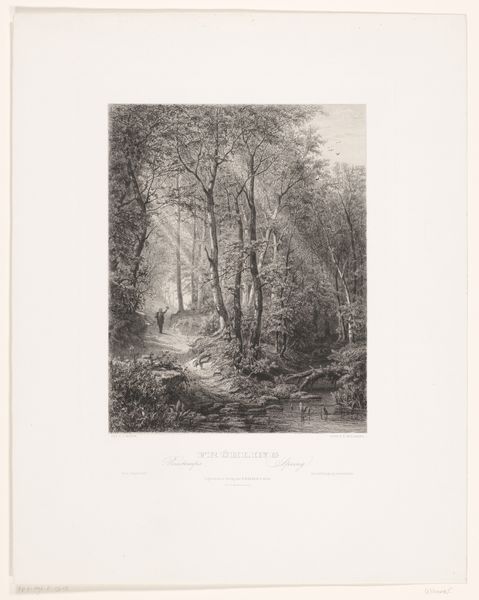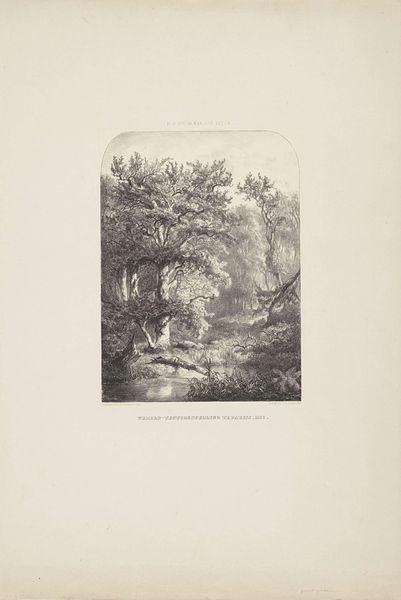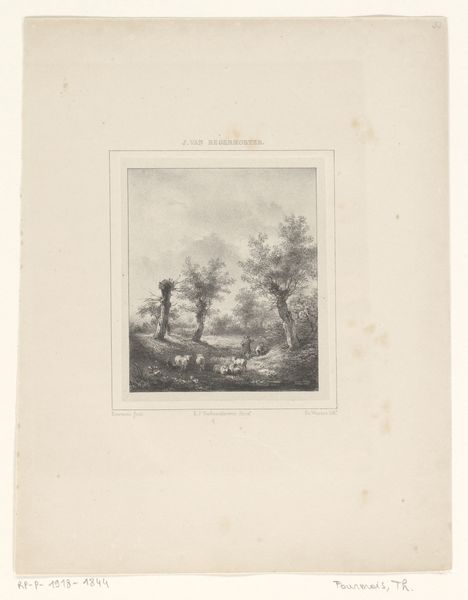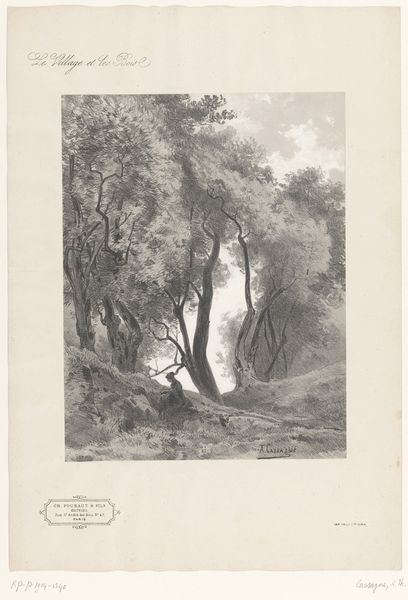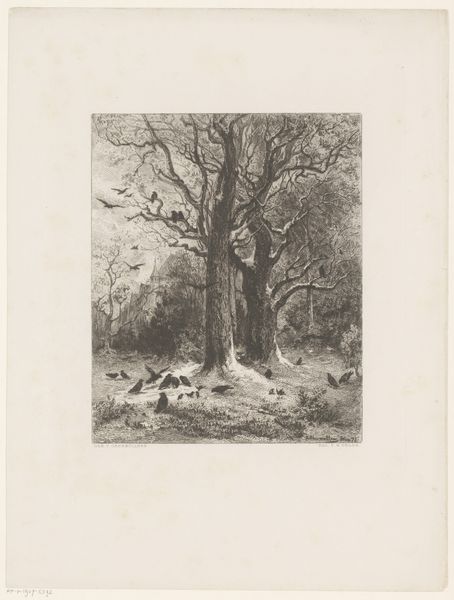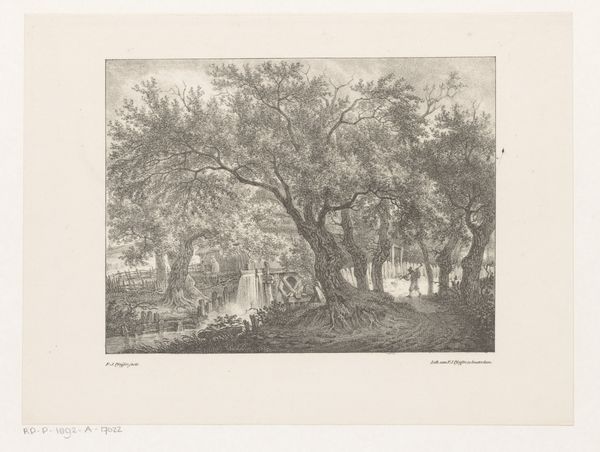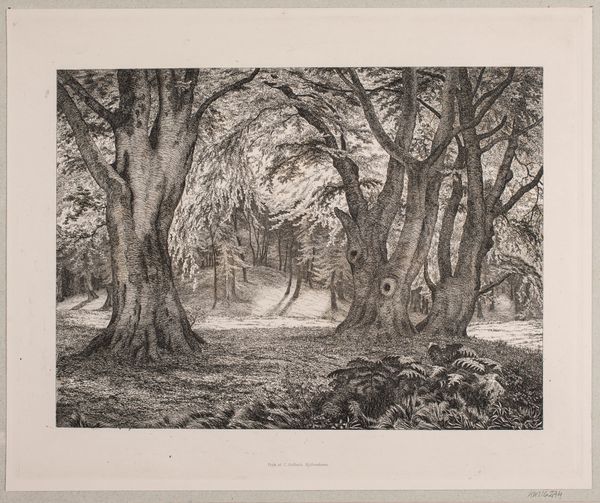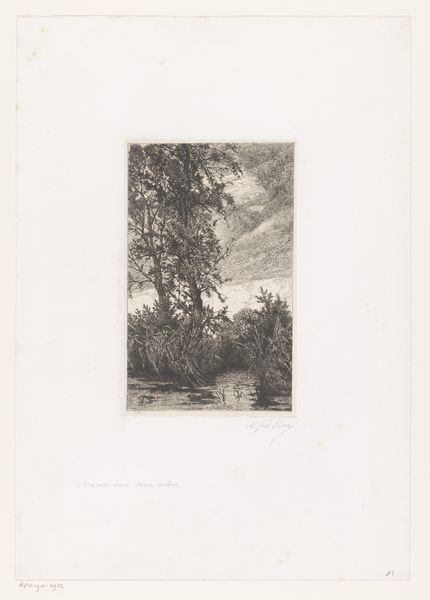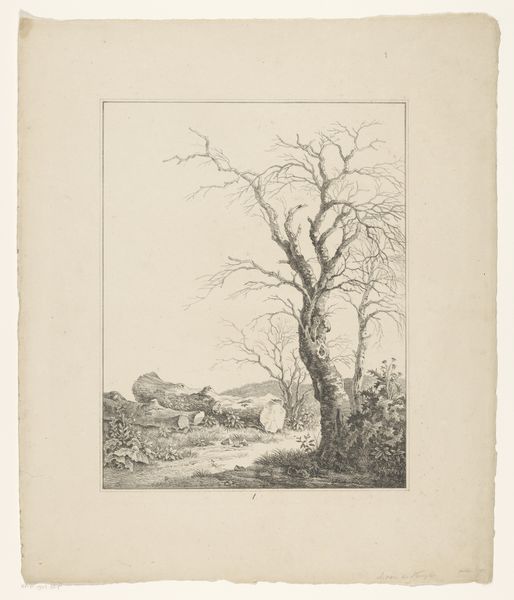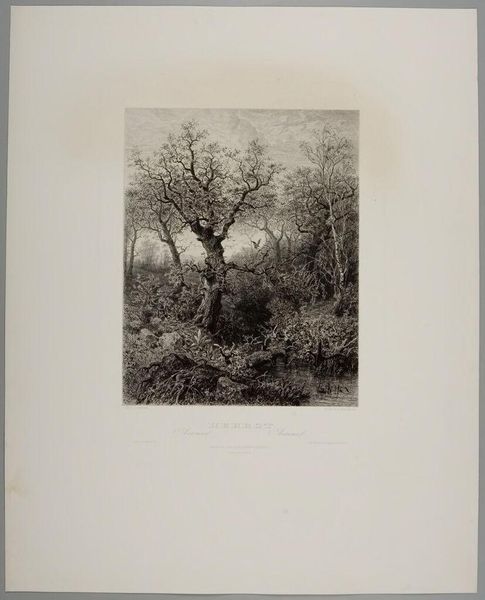
Dimensions: height 422 mm, width 312 mm
Copyright: Rijks Museum: Open Domain
Curator: Here we have "Herfst," which means "Autumn" in Dutch, an etching by Eduard Willmann. It was created sometime between 1842 and 1877. Editor: It has an eerie stillness to it, doesn’t it? That stark contrast between the black ink and the white paper gives it an almost gothic quality. Curator: Absolutely, that interplay between light and shadow, very dramatic. I think it pulls you into the scene—almost like stepping into a dark fairytale. It’s very Romantic in that sense, but also intensely Realist in its rendering of the forest floor. Editor: The level of detail is remarkable. Look at the roots of those trees, so intricately rendered, and the way the light catches on the water’s surface. There's so much texture here; it's almost tactile. It makes me think about how artists use landscape to talk about nationhood, and a particular pride in a homeland. Curator: I completely agree. And I love how those towering trees dominate the composition. They remind me of sentinels, standing guard over some hidden realm, especially how the branches claw upward like fingers. Willmann really knew how to compose drama out of what looks like an ordinary scene in the woods. Editor: Though this forest may have appeared quite common to some viewers at the time, it reflects back on the social and aesthetic importance of representing nature through the lens of Romanticism—perhaps reflecting anxieties linked to urbanization. I think that these idyllic scenes of landscapes allowed viewers an escape from modernity. Curator: An escape but also, perhaps, a moment to contemplate. To consider the cyclical nature of things—growth, decay, the passage of time. You see, I find a bittersweet beauty in it. There's an elegance even in decay, a sense of life continuing in new forms, something touching. Editor: I appreciate the way you put it; touching is indeed quite accurate. It captures the emotional undercurrent of the image quite aptly, but it also calls attention to the power of this work in eliciting our shared human vulnerabilities through aesthetic beauty. Curator: So well put, this reminds us to not just see, but also feel, as we're engaging with the past. Editor: Exactly. These pieces encourage us to contemplate our relation to nature, our history, and ourselves.
Comments
No comments
Be the first to comment and join the conversation on the ultimate creative platform.
